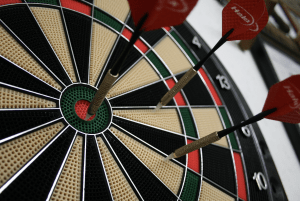How well is your elementary wellness program succeeding in helping your students construct their wellness toolkits to exercise their character strengths within the PERMAH pillars? In addition, where are your students regarding personal growth and thriving? Designing a wellness program is a vast task, with implementation being a vital component. Another critical aspect of program building and implementation that schools sometimes fail with is the follow-through to measure the effects upon the stakeholders.
Accountability, thus, is central to the success of the program. One way to pull in the lessons learned from the program rollout is to periodically have staff reflect, share and create together to improve your wellness curriculum.
The following is one approach for an elementary staff workshop to start the improvement process for your wellness program that you can possibly adapt for your staff as they strive to integrate the character strengths and PERMAH pillars into the culture of their classrooms. Measuring how effective your wellness program is for your students is another aspect of accountability. A future blog post will cover this most important topic.
Wellness Integration Reflection and Improvement Workshop
If your number of staff members is not too large, set up six tables where you usually do your professional learning workshops. If your staff is large, you need to set up two or more sets of six tables.
Let’s go with a smaller staff for this workshop description – one with a set of six tables and your staff divided into six groups. It is up to you to decide the parameters of the group makeup. Do you go with current grade level teams accompanied by specialists teachers, or do you mix things up by assigning group members from each grade level? An additional criterion could be to try and get a diverse mix of skills and character strengths within each group.
The first stage is to review the current PRIME integration strategies (the ones that work for most character strengths). The goal is to improve your instruction bringing the strengths into the culture of your classrooms. The teams also review the character strengths integration strategies specific to particular strengths (e.g., creativity). Each table has posters listing each PRIME and specific character strengths integration strategies. The teams at each table first rate each strategy for effectiveness, giving them a green for working well, a yellow for working so-so, and a red for not working.
The next step is to improve each strategy focusing on those receiving the yellow and red designations. The group works to improve each strategy writing their improved approaches to the strategy listings on the poster papers. Teams delist red strategies that cannot be improved.
________________________________
The second stage is the round-robin aspect of the workshop. Each table will be home to one PERMAH pillar listed on poster paper. You will need to assess how long stage one will take to decide whether to try and tackle this second stage after your work on the first stage or save this activity until another day. The goal is to review how individual character strengths can be applied within each PERMAH pillar. With your staff already having implemented your wellness program by first teaching the character strengths followed by teaching the PERMAH pillars and how character strengths can be exercised with each pillar, your staff should have enough experience to now reflect and improve upon their efforts.
Each team spends a designated amount of time at each PERMAH table, focusing on each specific pillar. The facilitator can predetermine how much time is spent at each table or assess how much time each team needs per table once the process begins. An example is one group working at the Relationships table. The first step is to share and record on the poster paper which strengths and how each group member is teaching them to their students to engage within the pillar. The next step is to collectively comment upon and refine the instructional techniques that are being shared. The final step is to discuss character strengths not listed by anyone that their students could exercise to enhance their engagement within their assigned PERMAH pillar. Strategies to teach these new strengths into the pillar also would be written on the poster paper. Once this work is completed, each group moves to another PERMAH pillar table to follow the same multi-stage procedure.
________________________________
The final stage is to regroup by grade level and assign specialists to grade-level teams in which they teach many of their students. You will need to assess how long stages one and two take to decide whether to try and tackle this third stage or save this activity until another day. The goal of this stage is to have each team spend time to devise new character strength integration strategies to use in their classrooms. The strategies can be PRIME in that they will work for most, if not all, of the character strengths, or they can be specific to individual character strengths. Team members present their new strategies to be refined by the team to be written on the provided “New Strength Integration Strategies” poster paper if the majority feel the strategy is doable and on par or better than current integration activities.
________________________________
The wellness coach and wellness team meet later to review the workshop(s) outcomes. Further refinements are made, if needed, to the information on the poster papers. The final listing of improved and new strategies is then added to your web portal. I am guessing you have some website or online resource that lists the PRIME integration and those specific to the individual strengths, like my Wellness@ES website.

Leave a Reply